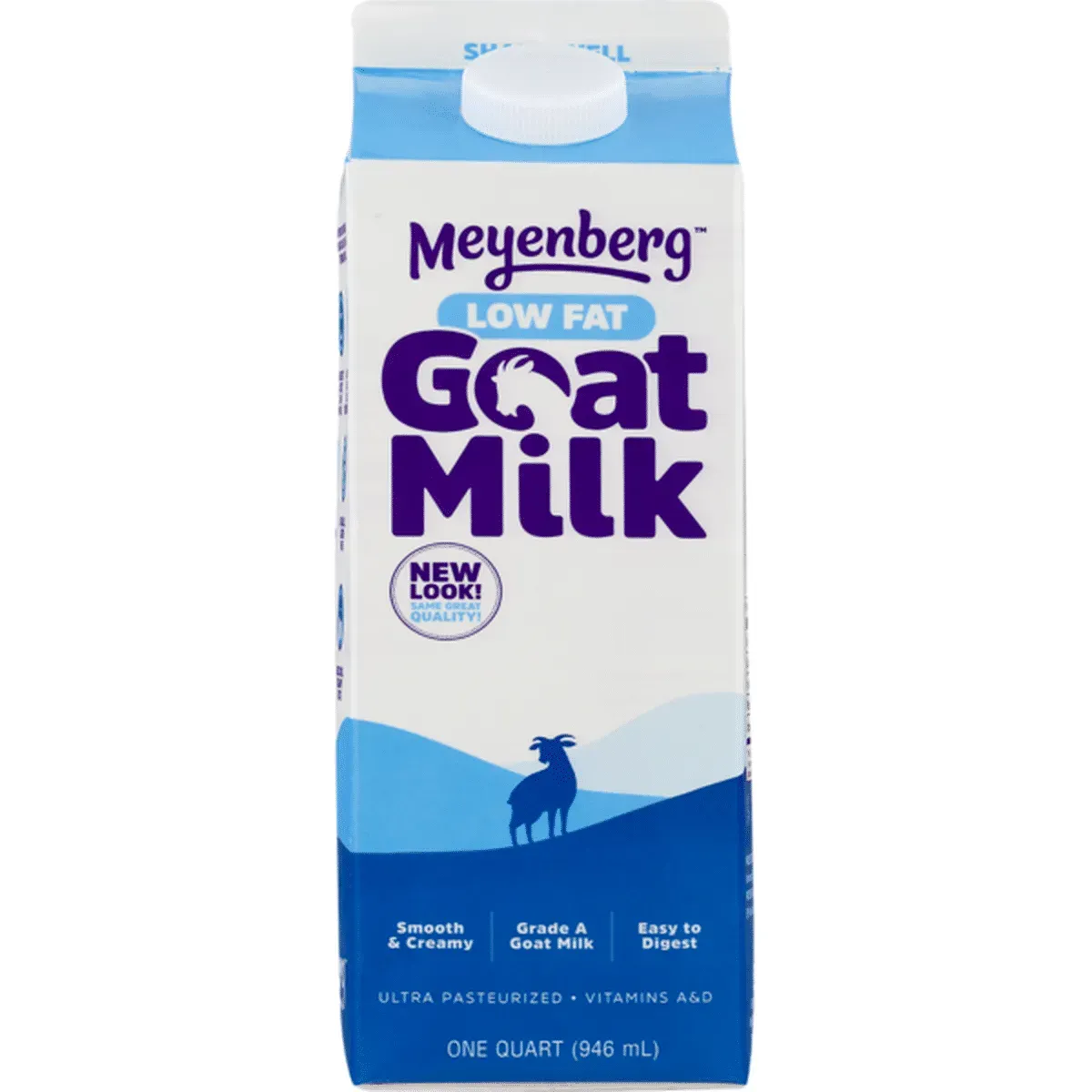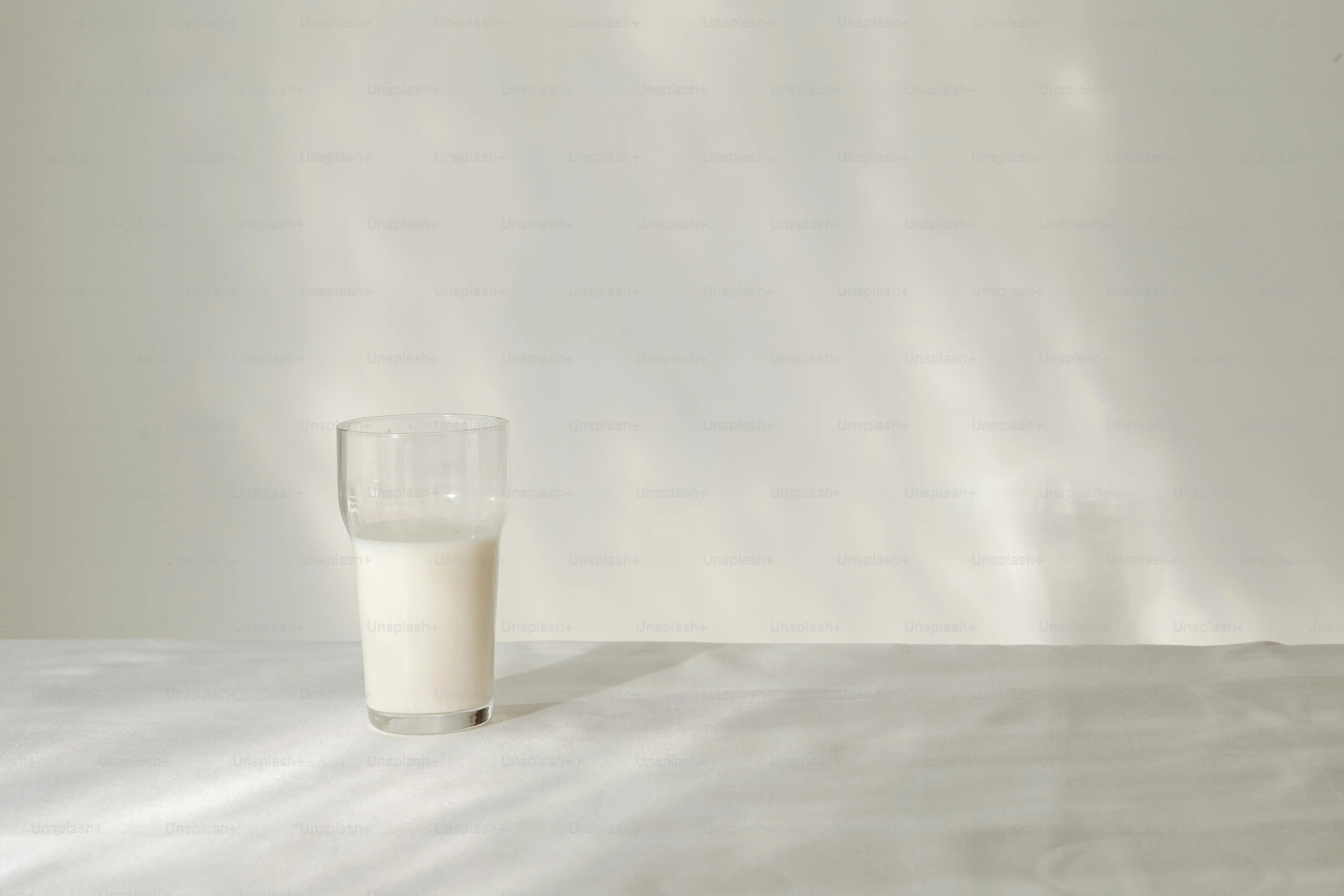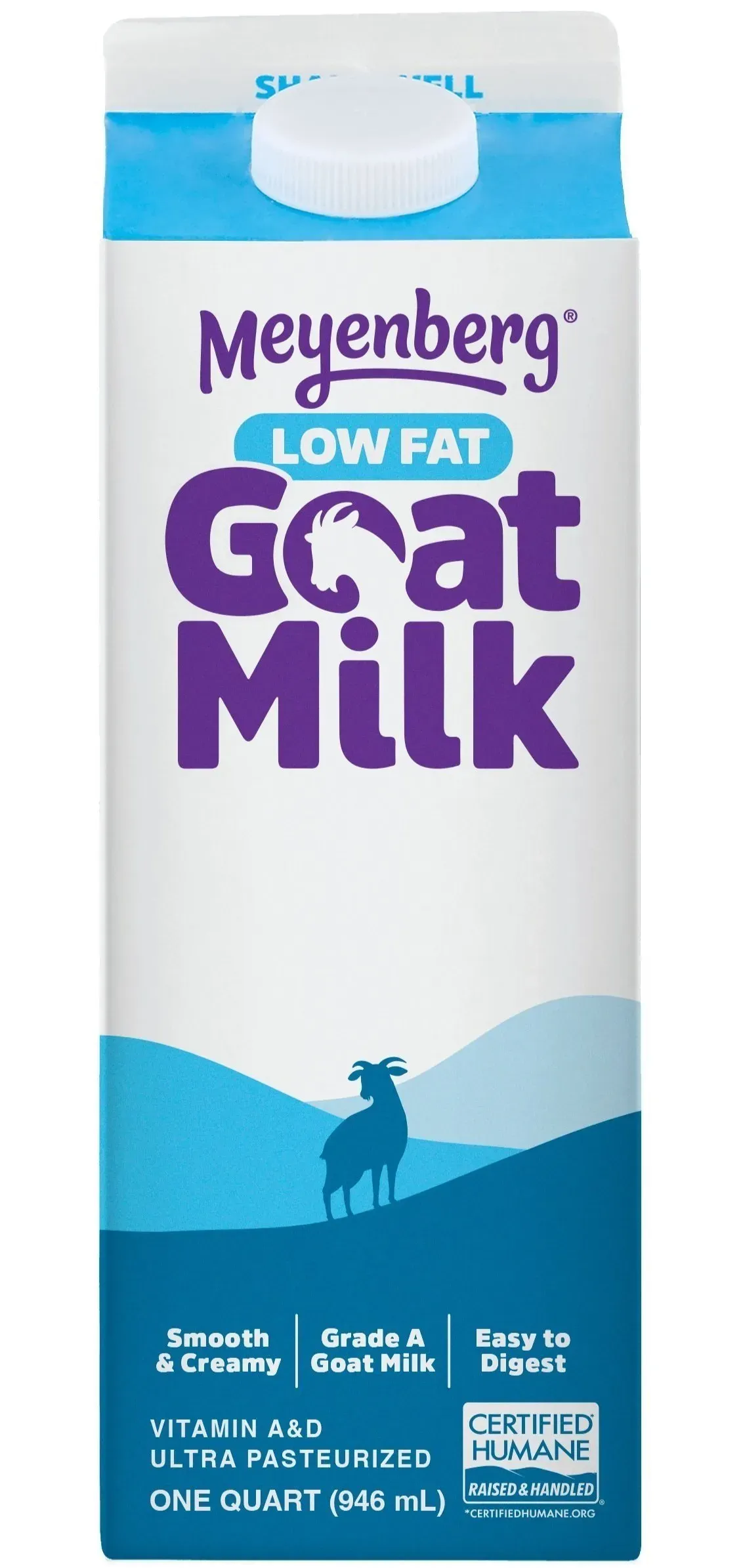Table of Contents
Alright, let's talk milk. Specifically, the kind that comes from goats. If you're like most people, you've seen goat milk on the shelves and maybe wondered what the deal is. And if you're keeping an eye on fat, the term "goat milk low fat" probably caught your eye. But is it just marketing speak, or is there a real difference? Sorting through the nutritional details of any food, let alone different types of milk, can feel like trying to assemble IKEA furniture without instructions.
Understanding Goat Milk Low Fat
Understanding Goat Milk Low Fat
What Exactly is "Low Fat" Goat Milk?
so you see "low fat" on a carton of goat milk and maybe you picture something drastically different from the regular stuff. The truth is, all milk naturally contains fat. "Low fat" simply means some of that natural fat has been removed. It's not some synthetic concoction; it's just the original milk, processed to reduce its fat content. Think of it like skimming the cream off the top, but done on an industrial scale. Regular whole goat milk typically has around 3.5% to 4% fat, sometimes a bit more. When you see goat milk labeled "low fat," they've usually processed it down to 1% or 2% fat. Sometimes you'll even find skim or fat-free versions, which aim for less than 0.5% fat. Understanding goat milk low fat starts with recognizing it's about removal, not addition.
How Low-Fat Goat Milk Gets Made
Producing low-fat goat milk isn't magic; it's science, specifically centrifugal separation. Raw goat milk goes into a centrifuge, which spins it at high speed. Because fat is lighter than the other components like protein and lactose, it separates out. The cream, which is the fat-rich part, is siphoned off. What's left is the lower-fat milk. This process is standard for producing low-fat versions of any type of milk, cow's included. The degree of spinning and skimming dictates the final fat percentage, giving you options like 1% or 2% goat milk low fat. It's a straightforward mechanical process designed to alter the nutritional profile based on consumer demand.
Milk Type (Typical Fat Content) | Fat Percentage Range |
|---|---|
Whole Goat Milk | 3.5% - 4.5% |
Goat Milk Low Fat (2%) | 1.8% - 2.2% |
Goat Milk Low Fat (1%) | 0.8% - 1.2% |
Skim/Fat-Free Goat Milk | < 0.5% |
Beyond Just Fat: What Else Changes?
When you take fat out of milk, you're not just reducing the calorie count. Fat carries fat-soluble vitamins like A, D, E, and K. While some milk is fortified with vitamins A and D after processing, the natural levels of these vitamins are reduced when fat is removed. The texture and flavor also change. Whole goat milk has a richer, creamier mouthfeel compared to its low-fat counterpart. The distinct "tang" some people associate with goat milk can become more pronounced in lower-fat versions because the fat isn't there to mellow it out. So, choosing goat milk low fat isn't just a numbers game on a nutrition label; it affects the sensory experience and the presence of certain nutrients.
Comparing Fat Content: Goat Milk Low Fat vs. Cow Milk
Comparing Fat Content: Goat Milk Low Fat vs. Cow Milk
Starting with the Basics: Whole Milk Fat
so you're looking at the fat numbers. How does whole goat milk stack up against whole cow milk before anyone starts skimming? Generally speaking, they're in a similar ballpark. Whole cow milk typically contains around 3.25% to 3.7% fat. Whole goat milk, as we noted earlier, is often slightly higher, somewhere between 3.5% and 4.5%. This isn't a massive difference in terms of raw percentage, but it contributes to the texture and richness. Think of it like comparing a standard chocolate chip cookie to one made with slightly more butter – noticeable, but not a complete overhaul. This baseline is important when we start talking about their low-fat cousins.
Low-Fat Versions: A Direct Showdown
Now, let's get to the main event: comparing goat milk low fat directly to cow milk low fat. When both are processed to, say, 2% fat, the percentage is, well, the same. The label tells the story there. A carton of 2% goat milk has roughly the same amount of total fat per serving as a carton of 2% cow milk. The difference isn't in the quantity of fat at this point, but in where that fat started and what else is left behind. The processing standardizes the total fat percentage, making the "low fat" claim consistent across species.
Milk Type | Typical Fat Percentage (Low Fat) |
|---|---|
Goat Milk Low Fat (2%) | 2% |
Cow Milk Low Fat (2%) | 2% |
Goat Milk Low Fat (1%) | 1% |
Cow Milk Low Fat (1%) | 1% |
It's Not Just the Amount: Fat Globule Size
Here's where things get interesting beyond just the percentage. The *structure* of the fat in goat milk is different from cow milk. Goat milk naturally has smaller fat globules. Imagine marbles versus golf balls. This smaller size means the fat is more evenly dispersed throughout the milk and doesn't separate as easily as cow milk fat. Even in goat milk low fat, the remaining fat, though less in quantity, retains this characteristic. Some nutritionists suggest these smaller globules might make goat milk fat slightly easier for some people to digest, though the science isn't settled globally on this point. It's a nuanced difference, not a dramatic one, but worth considering if you're sensitive to dairy fats.
Is Goat Milk Low Fat Right for You?
Is Goat Milk Low Fat Right for You?
Considering Digestibility and Sensitivity
let's cut to the chase. Why would someone bother with goat milk low fat instead of just grabbing the cow version? For many, it boils down to how it sits in their stomach. While not lactose-free (it has lactose, just like cow's milk), some folks find goat milk easier to digest. This isn't a universal truth, and it's definitely not a cure for diagnosed lactose intolerance. But anecdotally, some people report less bloating or discomfort. Maybe it's the smaller fat globules we talked about earlier, maybe it's something else about the protein structure, or maybe it's just a placebo effect. Whatever the reason, if cow's milk gives you grief but you still want dairy, goat milk low fat might be worth a shot. Just don't expect miracles; it's not a magic potion.
Taste Preferences and Nutritional Goals
Beyond potential digestive quirks, taste plays a huge role. Goat milk has a distinct flavor. Some love its earthy, slightly tangy profile; others can't stand it. The low-fat versions tend to have that tang more upfront because the fat isn't there to mellow it out. So, if you're not a fan of the taste of whole goat milk, the low-fat version might not win you over. From a purely nutritional standpoint, if your goal is simply to reduce total fat intake from dairy, and you're not concerned about the subtle differences in fat structure or minor variations in micronutrients, then 2% goat milk low fat is functionally very similar to 2% cow milk. The choice often comes down to personal experience, taste preference, and perhaps a willingness to pay a bit more, as goat milk products often carry a higher price tag.
So, who might benefit from trying goat milk low fat?
- Individuals seeking a dairy alternative they find easier to digest than cow's milk.
- People who enjoy the distinct flavor of goat milk but want less fat.
- Those looking to reduce saturated fat intake while still consuming dairy, provided taste and cost aren't barriers.
Cooking and Baking with Goat Milk Low Fat
Cooking and Baking with Goat Milk Low Fat
Using Goat Milk Low Fat in Savory Dishes
so you've got this carton of goat milk low fat and you're staring at a recipe that calls for milk. Can you just swap it in? For things like creamy soups, mashed potatoes, or even a béchamel sauce, yes, you generally can. Just be aware that because there's less fat, the final result won't be quite as rich or decadent as if you used whole milk. Think of it as trading a little creaminess for a lighter profile. The tang of the goat milk might come through more here, which can be great in some dishes, like a tomato soup, adding a little brightness. In other cases, say a delicate cream sauce, it might be more noticeable. Start with recipes where the milk isn't the absolute star, or where a slight tang works. And remember, lower fat means less stability sometimes, so heat it gently.
Baking with Goat Milk Low Fat: What to Expect
Baking is a bit more of a science experiment than cooking, and fat plays a crucial role in texture, moisture, and tenderness in baked goods. Using goat milk low fat instead of whole milk means you're losing some of that tenderizing fat. This can result in cakes or muffins that are slightly less moist or tender. Biscuits might not be as flaky. Cookies could spread less. It's not a disaster, but it's a difference. For recipes where milk is primarily adding liquid, like some breads or pancakes, the swap is usually fine. But in rich cakes, custards, or pastries where fat contributes significantly to the structure and mouthfeel, you'll likely notice the change. You might need to slightly increase another fat source (like butter or oil) or accept a slightly different texture. It's all about managing expectations when you use goat milk low fat in your baking projects.
When substituting low-fat milk in recipes:
- Expect less richness and potentially a stronger "tang" flavor.
- Heat gently, especially in sauces, to prevent separation.
- In baking, account for reduced moisture and tenderness compared to using whole milk.
- Consider adding a small amount of butter or oil if richness is critical in a baking recipe.
Finding Quality Goat Milk Low Fat Products
Finding Quality Goat Milk Low Fat Products
Where to Spot Goat Milk Low Fat
so you're convinced enough to give goat milk low fat a try, but where do you actually find the stuff? It's not always next to the gallon jugs of 2% cow milk at your corner store, that's for sure. Your best bet is usually larger supermarkets, health food stores, or specialty dairy sections. Sometimes it's refrigerated right alongside the cow's milk, but often it's tucked away with other alternative milks or specialty dairy products. Don't be afraid to ask someone who works there; they often know exactly where the more niche items are hiding. Look for labels clearly stating "low fat," "1%," or "2%," often right under the "goat milk" part. The packaging might look a little different from what you're used to seeing for cow's milk, maybe a smaller carton or a different brand name.
Decoding the Label: Beyond the Fat Percentage
Finding the right goat milk low fat isn't just about spotting the "low fat" label. Once you've located it, take a moment to read the rest of the carton. Check the ingredients list. Ideally, it should just be pasteurized low-fat goat milk, maybe with added vitamins A and D (which are often put back in after fat removal, remember?). Look for information about the farm or source if that's important to you. Some brands emphasize how their goats are raised, whether they're pasture-raised or organic, though these factors don't directly impact the low-fat aspect itself, they speak to the overall quality and ethical sourcing. Expiration dates are crucial, obviously. Unlike some ultra-pasteurized cow's milk that seems to last forever, fresh goat milk, even low-fat, often has a shorter shelf life. Give it a sniff test when you open it too; fresh milk smells clean, not "goaty" in an unpleasant way.
When picking out your carton of goat milk low fat, consider these points:
- Check the fat percentage (1% or 2% are common low-fat options).
- Read the ingredients list – simple is usually better.
- Look for added vitamins A and D fortification.
- Note the expiration date; goat milk often has a shorter life.
- See if there's information about the farm or sourcing practices.
The Verdict on Goat Milk Low Fat
So, where does this leave us with goat milk low fat? It's not a mythical creature; it's a real product with a fat profile that often aligns more closely with reduced-fat cow's milk than whole milk from either animal. The choice between it and other milk types often comes down to individual digestion, taste preferences, or specific dietary goals rather than a dramatic difference in fundamental fat content. While it might offer a different nutritional nuance for some, it's important to approach it with realistic expectations, not as a miracle food. Consider the facts, your needs, and perhaps give it a try if you're curious. Just don't expect it to solve all your problems.
